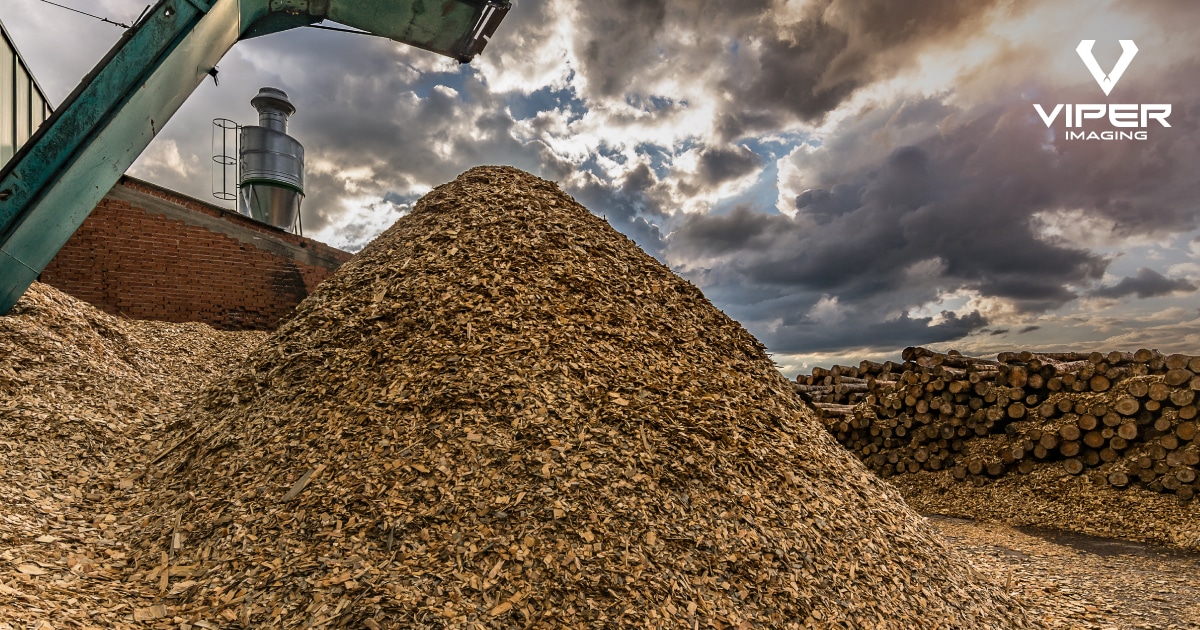
Fire is a constant risk at lumber mills and wood processing facilities. Most warehouses, storage areas, and processing facilities are already equipped with fire systems intended to slow the spread of flames and minimize damage until authorities arrive.
But as we discussed in our last article, The High Cost of Reactive Fire Detection – Why the Lumber Industry Needs a New Approach, these systems only initiate after a fire occurs. While they are necessary for safety and compliance, they are not, on their own, enough to mitigate the risk of a fire starting in the first place.
Continuous Thermal Monitoring solutions provide 24/7 coverage of equipment and high-risk areas to enable early detection and warning before ignition, allowing Operators to take immediate action to prevent the fire rather than try to contain it.
To learn more about the risks of fire at lumber and wood processing facilities and the benefits of a proactive approach to early fire prevention, download our white paper: Mitigating the Risk of Fires – Why Lumber and Wood Processing Facilities Need Continuous Thermal Monitoring.
Detecting the Conditions Needed for Fire
Continuous Thermal Monitoring solutions leverage advanced thermal imaging cameras to capture real-time video and constantly calculate the temperature, even when sites are unattended.
They monitor the conditions needed for fire rather than the presence of fire itself. This allows facilities to proactively address potential fire risks such as hotspots, overheating assets, residual heat, or other hazards and take action to prevent ignition.
The system integrates with most industrial platform controllers and fire systems using standard industrial protocols. When triggered, the system automatically sends an alert via email, text, or the control system. Auto-dialers can be configured to notify authorities and reduce response times. The system can also respond automatically by shutting down equipment or activating fire suppression systems.
Implementing Continuous Thermal Monitoring
Continuous Thermal Monitoring solutions can be configured and deployed for a variety of applications in all areas of the facility.
Bulk Storage Monitoring
Large quantities of combustible materials found in bulk storage areas create significant fire hazards and can be prone to spontaneous combustion. Continuous Thermal Monitoring solutions can be combined with other sensors, such as embedded thermocouples or temperature probes, to measure surface temperature and detect heat variations that could indicate a thermal event.
Machinery & Equipment Monitoring
Lumber and wood processing facilities operate heavy equipment such as saws, conveyors, sanders, planers, and dryers. Continuous Thermal Monitoring solutions act as a crucial preventative measure that ensures systems are operating within normal temperature ranges, while also reducing the risk of fire caused by unsupervised equipment after personnel have gone home.
Planer Rooms
Planers generate friction and heat, while motors, bearings, belts, and other moving parts can heat up as a result of improper maintenance. Continuous Thermal Monitoring identifies localized heating in equipment or dust collection areas so that operators can intervene before ignition occurs. This is especially important given the presence of airborne dust, where even a small ignition source can result in a catastrophic explosion
Predictive Maintenance
In addition to fire detection and prevention applications, lumber and wood processing facilities can leverage Continuous Thermal Monitoring solutions to enable predictive maintenance. Thermal imaging cameras detect sudden or prolonged temperature changes that could indicate a potential fault. Instead of relying on manual inspections or time-based maintenance schedules, technicians can conduct maintenance based on the actual health and performance of the asset.
Mitigating Risk with Continuous Thermal Monitoring
Continuous Thermal Monitoring solutions take a proactive approach to fire prevention by automatically detecting hazardous conditions before ignition.
Today’s cameras are reliable, cost-effective, and easy to use, giving Operators access to the right information and a more complete view of their equipment and facilities. By leveraging advanced thermal cameras for high-risk applications, lumber and wood processing companies can reduce downtime, enhance worker safety, and mitigate the risk of fires.
To learn how your facility can implement a proactive approach to fire detection and detection, download our white paper:
